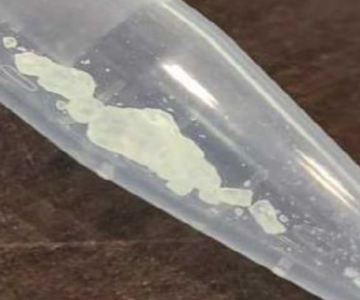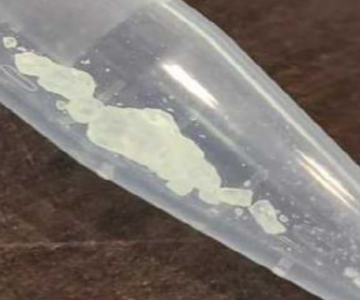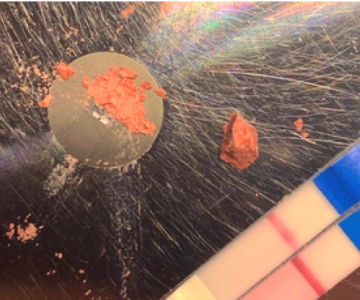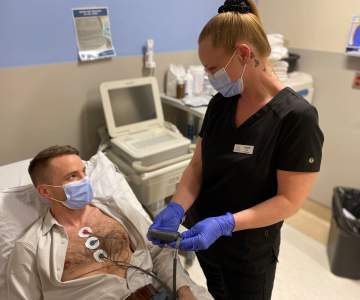Breadcrumb
- Home
- media
Explore Media
Toxic Drug Alert
Please see the attached document to learn more about the look, contamination, and risk associated with the current drug alert.
View more toxic drug, environmental, and COVID-19 alerts.
Toxic Drug Alert
Please see the attached document to learn more about the look, contamination, and risk associated with the current drug alert.
View more toxic drug, environmental, and COVID-19 alerts.
Public Service Announcement
Residents of the 100 Mile House area are advised that the Emergency Department at 100 Mile District General Hospital will be closed from 8 a.m. to 8 p.m. on June 3 due to unforeseen limited physician availability.
Residents are advised of the following when the emergency department is closed:
In the event of an emergency, call 9-1-1.
Visit the emergency department at one of the following facilities:
Cariboo Memorial Hospital – 517 North, 6 Ave N, Williams Lake
Royal Inland Hospital – 311 Columbia Street, Kamloops
Call HealthLink BC at 8-1-1 (24-hour service) if you are unsure of your need to seek emergency care.
Interior Health regrets this temporary change to normal operations in 100 Mile House.
Emergency department services in 100 Mile will resume at 8 p.m. on June 3.
Toxic Drug Alert
Please see the attached document to learn more about the look, contamination, and risk associated with the current drug alert.
View more toxic drug, environmental, and COVID-19 alerts.
News Release
In response to the ongoing toxic drug emergency, a new health alert system has been launched across Interior Health.
“Across the province – in every community – we continue to see tragic deaths due to the toxic drug supply. The new alert system is an example of innovation and community collaboration to save lives in this crisis,” said Minister of Mental Health and Addiction Sheila Malcolmson.
The Toxic Drug Alerts system uses text messaging to send alerts as a public health measure to prevent drug poisonings and deaths, and provides timely information and up-to-date resources to people who use drugs and community members.
“We are thrilled to have this new tool available in the Interior to support people and to get information out immediately to those who need it most,” said Interior Health president and CEO, Susan Brown. “As the number of lives lost continues to grow, we are focused on removing barriers to supports, and implementing new strategies to prevent drug poisonings and deaths and mitigate harm from the toxic drug supply.”
People who use drugs, those who support them, and community members are encouraged to opt-in for toxic drug alerts by sending the keyword JOIN to ALERTS (253787). They will receive toxic drug and drug poisoning alerts and, in the future, public health alerts, such as COVID-19 related information.
“Timely and targeted information regarding the current drug supply is vital when we are seeing the toxicity of illicit drugs increase at an alarming rate. Alerts will help people make better informed decisions and ultimately help reduce harms, including overdose and death, from poisoned drugs,” said Jessica Bridgeman, Interior Health sexual health and harm reduction manager.
To further help keep communities safe, subscribers can anonymously submit information relating to toxic drugs or drug poisonings via text using the keyword OD.
“The priority is to get people access to safe supply, but while we’re waiting, toxic drug alerts will be really helpful in letting us know what is going around in our communities, and can help people make harm reduction decisions for themselves,” said Sara Young, manager of Harm Reduction at BC Centre for Disease Control.
Drug alerts play an important role in empowering people who use drugs to do so more safely.
“I have been so glad that I have been getting the drug alerts in my area and surrounding areas because anything that is in the surrounding areas is going to make it here eventually,” said one person with lived experience who was involved in developing the new system. “I used this information to prepare myself for any toxic drugs that could be coming our way by doing smaller testers, trying to get samples into the drug testers, asking my peers what they think and informing my peers of the drug alerts. It helped a lot when there were photos in colour. The description was also helpful.”
Interior Health is the first health authority to be launching the new system which is developed by the BC Centre for Disease Control and the Office of Virtual Health at the Provincial Health Services Authority in partnership with regional health authorities. The alert system is expected to expand to additional health authorities summer 2022.
To learn more, visit towardtheheart.com.
Public Service Announcement
Clearwater and area residents are advised of a temporary change to the emergency department hours at Dr. Helmcken Memorial Hospital tonight due to unforeseen limited staffing availability.
The emergency department will be closed:
5 p.m. Wednesday, May 25 to 7 a.m. Thursday, May 26
Interior Health regrets this temporary change to normal operations and reminds residents to take note of the following if they require care while the emergency department is closed:
In the event of an emergency, call 911.
Visit the emergency department at one of the following facilities:
Royal Inland Hospital – 311 Columbia Street, Kamloops
Call HealthLink BC at 8-1-1 (24 hour service) if you are unsure of your need to seek emergency care.
The emergency department in Clearwater is normally open 24/7.
Toxic Drug Alert
Please see the attached document to learn more about the look, contamination, and risk associated with the current drug alert.
View more toxic drug, environmental, and COVID-19 alerts.
News Release
People will benefit from the major expansion at Penticton Regional Hospital as final renovations wrap up at the David E. Kampe Tower.
Read the full release
Information Bulletin
Interior Health (IH) is upgrading heart monitors across the region, improving patient access to important diagnostic testing, and enhancing timely access for physicians and nurse practitioners to these reports.
A heart (or Holter) monitor is a diagnostic test that monitors cardiac rhythms via continuous electrocardiogram (ECG) tracing over 24 hours or more. This service is offered at 31 sites across IH.
For patients, the brand new devices and system will prevent diagnostic cancellation or the need for diagnostics due to equipment issues. Sites can also share the workload to scan the Holter exams if one site has an unexpected increased volume, decreasing the time to get results.
This project is the outcome of the collaborative efforts between IH and the Royal Inland Hospital (RIH) Foundation. The project came to fruition as a result of a generous estate gift from Bill and Catherina Humphrey.
“Without the support of the RIH Foundation and the donors, this project to this extent would not have been possible,” said Interior Health vice president of clinical operations, Dr. Shallen Letwin. “We’re proud to be able to provide first-class cardiac care to people living across the Interior region.”
“The Royal Inland Hospital Foundation is proud to take care of our big family at Interior Health. The impact of this legacy donation is greater than we could have ever wished for,” explained Heidi Coleman, CEO of the RIH Foundation.
All sites in IH will be provided with new equipment to replace older monitors and scanning software. Phased out equipment still within its operational life will be donated to other areas in need. Implementation started in March and the rollout across IH will be complete in June.
“As a physician, it’s convenient to be able to report Holter results from any computer,” said Dr. Shawn Pun of Kamloops. “This system has great potential to reduce current Holter reporting turnaround times, a huge benefit to both our patients and health-care providers.”
Facts:
Number of sites
Scanning sites: 8
Remote sites: 24
Total number of devices purchased and distributed:
275 Holter monitors
25 remote licence keys
16 scanning licence keys
-
Load More
Showing 630 of 1039




